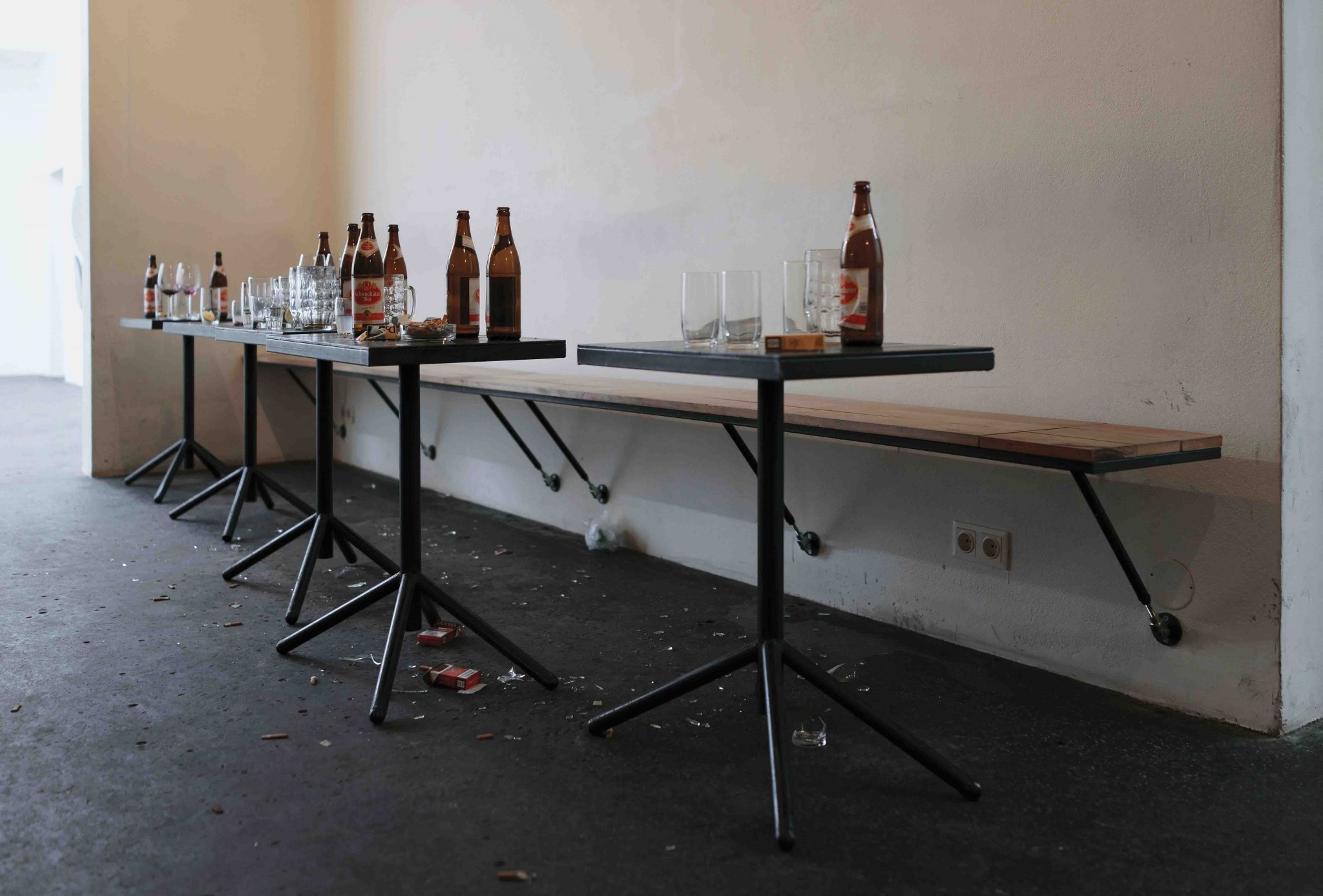Ve.Sch (the name comprises the abbreviated surnames of its two founders) is not an off-space in the same sense as, say, London’s alternative art spaces: off the map. Located in the centre of Vienna (Schikanedergasse 11), it’s just around the corner from one of the city’s main gallery drags (Schleifmühlgasse), in between two pillars of Vienna’s contemporary art mainstream – the Secession and the Generali Foundation – and just a few minutes’ walk from the main cluster of contemporary art institutions, at the MuseumsQuartier, as well as another chunk of commercial galleries on Eschenbachgasse. It’s nothing special to look at from the outside (an anonymous, graffiti-covered door leading to a three-room half-basement) and has the feel of a rowdier, grungier Cheers bar, but physically it’s at the heart of things.
Neither is it one of the many off-spaces that comes and goes after a limited run or the culmination of a specific programme: Ve.Sch, an artist-run space, was founded in 2008, and is something of a Tuesday- and Thursday-night (it’s only open those evenings, from 7pm through to various definitions of morning) institution within the city’s art community. In fact, when I meet three of the four artists who run it, they go out of their way to downplay this, pointing out that some elements of the art ecosystem don’t generally hang out at this combined bar and exhibition space (apparently on a visit to Ve.Sch it can be guaranteed that you will find hardly any collectors and only a few commercial gallerists).
Ve.Sch is currently run by Martin Vesely (the Ve.), Ludwig Kittinger (who joined in 2010 and, with fellow artist Fernando Mesquita, developed the Dienstag Abend – Tuesday night – programme of one-night exhibitions, between 2008–10), Franz Zar (an artist and musician, who joined in 2011) and Thea Moeller (who recently joined the team to strengthen the space’s links to a younger generation of artists, with whom the boys are not so well connected). As that suggests, each artist brings his or her own social, artistic and intellectual networks to the project, taking it in turns to invite artists to use the space. Ve.Sch is about dialogue, Zar points out, and he means it both in terms of the dialogue between one artist and another (between the four artists and between individual commissioners and commissionees), and in terms of the conversations around the bar. Indeed the bar itself is perhaps the biggest artwork in the space: an installation as much as a sales point. (Although it is the latter too, as the sales from the bar are crucial to financing the space, which also receives state support.)
While it might be intimidating for an outsider to walk into a bar in which everyone seems to know everyone else’s name, the art on show acts as a leveller. You’re never short of conversation in Ve.Sch – if worst comes to worst you can talk about the art.
Ve.Sch is dedicated to showcasing the productions of the local art scene. Recent displays have included an interactive work by David Moises that involved barflies firing aluminium bolts from a sports crossbow into cans of pressurised polyurethane foam, and Wound (2013), for which Hugo Canoilas (a Vienna-based Portuguese artist) covered the walls of the bar in linen painted with Mad Men-era adverts promoting the benefits of cigarettes, lard, firearms and the erotic potential of the right deodorant. Other exhibitions have featured performances, installations, works hung on the wall and music – the kind of mix of genres and styles that makes the space hard to define or categorise.
Vesely points out that Ve.Sch sets out to be ‘a space for everyone’ – not just one particular clique, movement or age group – and to avoid the sense of hierarchy that is so prevalent in the artworld in general. “It’s not about power,” Kittinger ads, before conceding that the very fact he needs to mention as much means that, on a certain level, it is. But the real lesson from Ve.Sch is that it’s not the most visible institutions that make an art community (and the construction of a community is the real Ve.Sch programme), it’s the less visible places like this.
This article was first published in the September 2013 issue.
